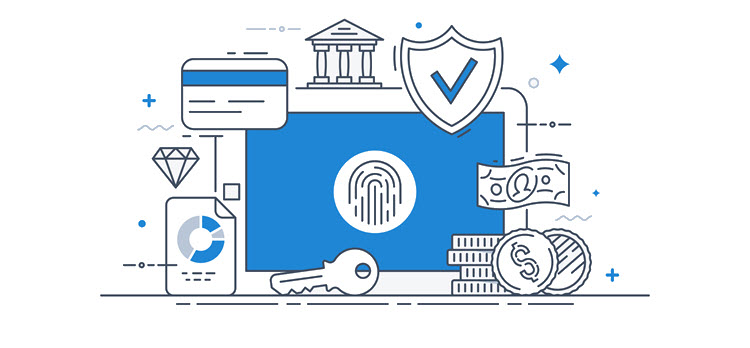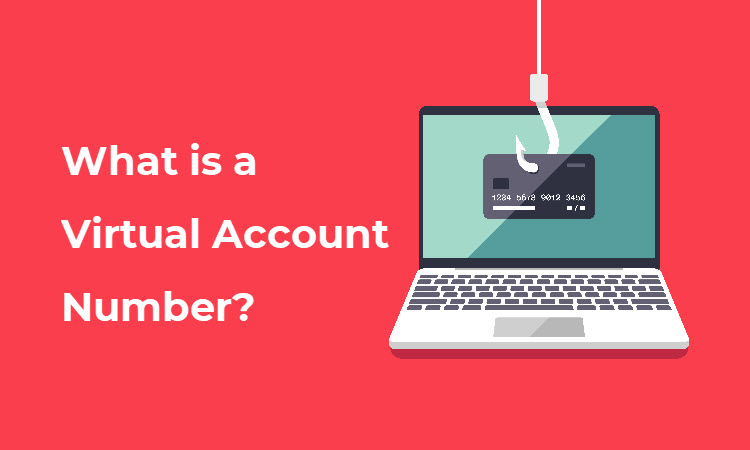Identity theft has skyrocketed in recent years, with the latest data showing that losses due to fraud have increased more than 70 percent in 2021 to reach over $5.8 billion. As the threat of online payment fraud continues to grow, virtual account numbers (VANs) present a high-tech solution for staying safe while paying online.
This article explains what virtual account numbers are and how they protect cardholders.
What Is a Virtual Account Number?
A virtual account number is a unique, random, temporary number used instead of an actual credit or debit card number during online transactions. The purpose of virtual account numbers is to prevent card information from being stolen or used fraudulently.
Virtual account numbers are valid for a limited time only and usually expire after use, preventing unauthorized use of a cardholder's information after a completed transaction.
Some virtual account numbers also have additional security features, such as expiration dates or transaction limits, which help further protect the cardholder's account.
How Does a Virtual Account Number Work?
Shopping with a virtual account number is almost identical to using a traditional credit card. The only difference is at the checkout phase, where cardholders input the virtual account number instead of the real one.
The payment proceeds regularly, with the virtual account number identifying the transaction and the bank deducting the funds from the cardholder's real account.
The merchant also receives the payment from the card issuer in the usual way, only without receiving access to the cardholder's actual account number.

When Should You Use a Virtual Account Number?
Here are a few examples in which using a virtual account number can be beneficial:
- When buying from unfamiliar merchants. A virtual account number reduces the risk of account number theft that can happen due to subpar security measures or intentional foul play.
- If you have to share your account information with others. If you have had to disclose your account information to an acquaintance or a business partner, a virtual account number can help to protect your account from being abused.
- When using a public or shared computer. When using a computer at a library or internet cafe, using a virtual account number prevents your actual account number from being stored and potentially accessed by others.
Note: If you are a merchant looking to protect your customer's data and assets, consider reading our article on the best practices for ecommerce fraud prevention.
Can You Use a Virtual Account Number More Than Once?
You can use a virtual account number more than once, but only if the VAN was made to be recurring and not single use. Carefully read the terms and conditions to ensure you use the VAN as intended.
Single-use VANs are generated for a one-time transaction and expire immediately after use or after a short period.
Recurring VANs, on the other hand, can be used for multiple transactions until they are deactivated, or they expire. These VANs are useful for subscription-based services or recurring payments, such as video streaming services or magazine subscriptions. An added benefit of using recurring VANs for subscriptions is that they will not renew automatically when the virtual account number expires, helping you avoid paying for a service you no longer want or need.
Are Virtual Card Numbers the Same as Virtual Account Numbers?
Virtual card numbers and virtual account numbers are the same, and both refer to using temporary digital replacements for actual account information.
The confusion stems from inconsistent naming practices of the banks offering this feature, which often have branded names to stand out from the competition. For example, Citi Bank named the feature virtual account numbers, while Capital One calls them virtual card numbers.
How Do I Get a Virtual Account Number?
To obtain a virtual account number, you need to open an account with a bank that offers VANs as a feature. After you've signed up, you should be able to request a virtual account number through the bank's website, mobile app, or browser extension.
Responding to the request, the bank will use a computer algorithm to generate a virtual account number and link it to your account with a transaction limit and expiration date. The bank might also provide an accompanying virtual card verification value and a code (CVV/CVC) to complete online transactions.
Keeping this information secure is critical because if someone can access it, they can make purchases in your name.
Note: Stay ahead of the game and protect your business by reading our article on the latest ecommerce fraud trends.

Advantages of a Virtual Account Number
Here are the potential advantages of using a virtual account number:
Security
Virtual account numbers provide an extra layer of security for online payments, as they cannot be used for other transactions or traced back to your actual account number.
If a fraudster gets access to a virtual account number, they will not be able to use it to make unauthorized transactions or access personal information.
Convenience
Virtual account numbers are easy to generate and hassle-free. Users can often access them through an online account or mobile app, making them even more convenient.
Control
Issuers can encode virtual account numbers with a hard limit on the amount of money the cardholder can spend or the types of transactions they can make.
This limit can help cardholders stay within budget, avoid overspending, and prevent unauthorized transactions.
Note: Improve the security of your online transactions by learning about the various payment authentication methods and tools.
Drawbacks of a Virtual Account Number
While VANs can be a convenient and secure payment option in some situations, there may be better choices in some cases. Here are a few potential drawbacks to consider:
They Do Not Guarantee Protection
While virtual account numbers provide an extra layer of security, the risk of fraud never disappears.
If someone else gains access to your virtual account number, they could use it to make an unauthorized transaction.
There Is Limited Acceptance
Unfortunately, not all merchants accept virtual account number payments. VANs are still a relatively new and alternative payment method, and some merchants do not accept them – either because of transaction fees or because they lack the necessary systems to process them and do not want to invest in implementing new payment systems.
Additionally, despite the many benefits of virtual account numbers for cardholders, not all credit card issuers offer them for much of the same reasons as merchants.
There Might Be Fees
Some financial institutions may charge fees for generating and using a virtual account number, which they may not always disclose upfront. These fees can be a flat rate or a percentage of the transaction amount and can vary depending on the institution and the type of transaction.

Conclusion
Virtual account numbers are a convenient way of protecting online transactions against fraud and identity theft. They allow users to create a unique, random, and temporary account number that fraudsters cannot use once it has expired.
Even though virtual account numbers are a solid improvement in security, they are not watertight and come with a set of drawbacks. Cardholders should always check with their issuer if they charge fees for creating or using VANs and whether the seller will accept payments with a virtual account number.
